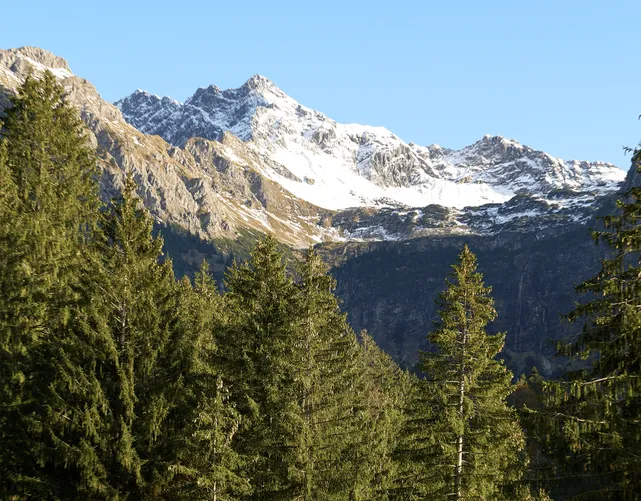Detailed Description of Our Project Areas
Brazil (Amazon Rainforest)
The Lungs of Our Earth
Switzerland (Alpine region)
Alpine forest areas as climate protectors
Ecological significance
Alpine forests play a crucial role in the Alpine ecosystem. They protect against avalanches, landslides and erosion, regulate the water cycle and harbour a rich variety of flora and fauna. They also store considerable amounts of carbon, both in biomass and in the often deep mountain soils.
The forests of the Swiss Alps are especially valuable because they have been managed sustainably for centuries and exhibit high structural diversity. They represent a cultural heritage while also serving as modern carbon sinks with significant potential for climate protection.
Challenges
Climate change poses particular challenges for alpine forests: Temperatures in the Alps are rising about twice as fast as the global average, leading to shifts in species composition, increased pest pressure and more frequent extreme-weather events. Dry periods are becoming longer, while heavy-rainfall events occur more often, increasing erosion risk.


Our measures
In our Swiss areas we adopt an integrated approach that combines climate protection, biodiversity promotion and adaptation to climate change:
- Climate-adapted forest management: We plant tree species that can cope with the changing climatic conditions, including warmth-loving species such as Douglas fir (Pseudotsuga menziesii) and sweet chestnut (Castanea sativa), as well as robust native species like silver fir (Abies alba) and sycamore maple (Acer pseudoplatanus).
- Altitudinal expansion of forests: Through targeted afforestation above the former tree line we make use of the new growth zones emerging at higher elevations due to climate change. This measure not only creates new CO₂ sinks but also reduces erosion risk on steep slopes.
- Protective-forest management: The care and strengthening of protective forests has a long tradition in Switzerland. We use this knowledge to shield settlements and infrastructure from natural hazards while simultaneously optimising carbon storage. Targeted rejuvenation and the maintenance of a multi-layered structure maximise both protective effect and CO₂ sequestration.
- Biodiversity promotion: By designing structurally rich forests with deadwood elements, glades and stepped forest edges we create diverse habitats. We place particular emphasis on protecting rare alpine species such as the Alpine salamander, various orchid species and specialised insects.
Special achievements
Alpine conditions place special demands on forestry but also offer unique opportunities. The tree species we select are specially adapted to these conditions and, despite the shorter growing season, show remarkable growth rates and CO₂-sequestration performance. The establishment of new forest stands above the traditional tree line has been particularly successful; they now act as pioneering CO₂ sinks while also improving avalanche protection. We have also restored several degraded alpine pastures, which once again represent species-rich mountain-meadow ecosystems.
